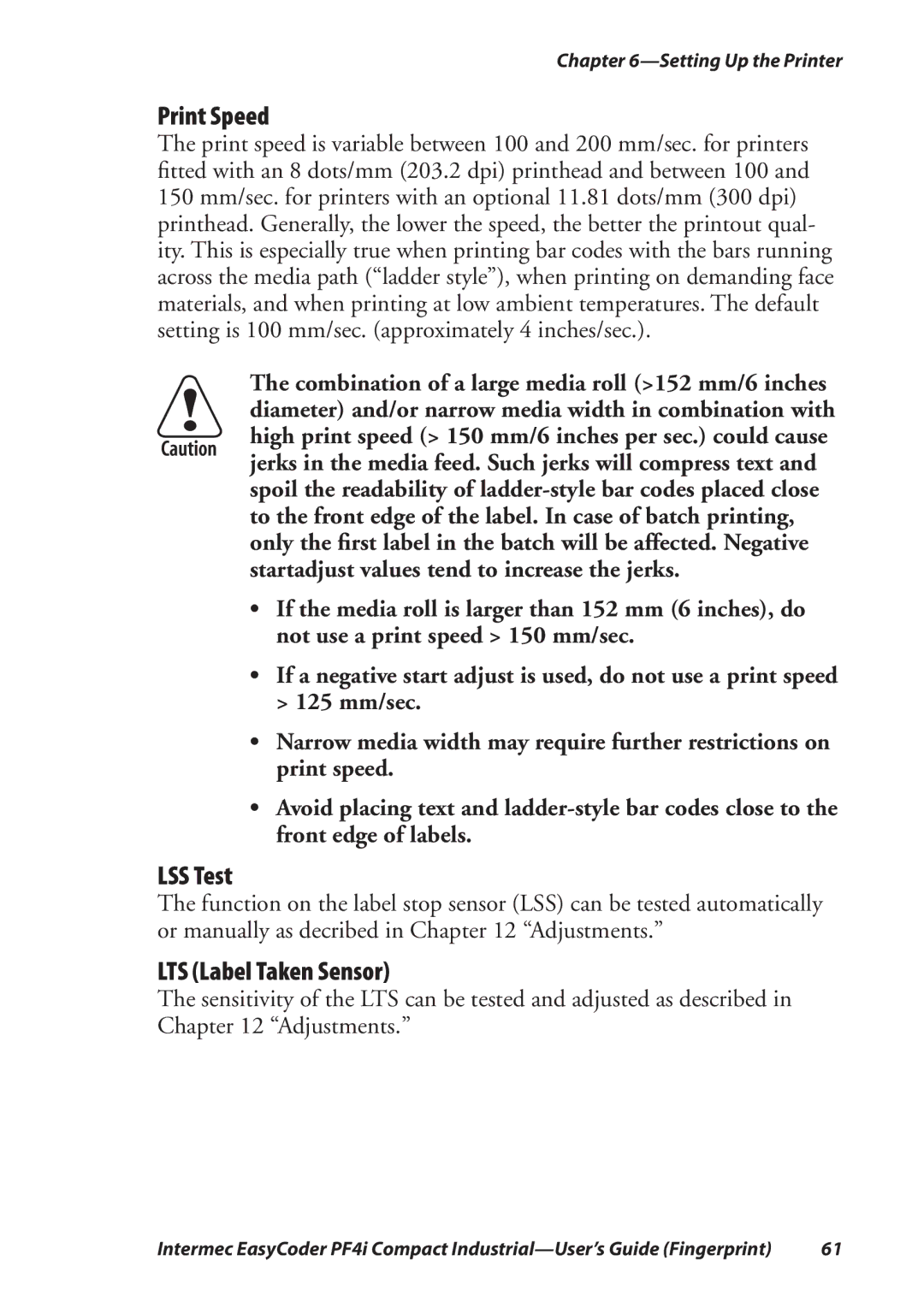Chapter
Print Speed
The print speed is variable between 100 and 200 mm/sec. for printers fitted with an 8 dots/mm (203.2 dpi) printhead and between 100 and 150 mm/sec. for printers with an optional 11.81 dots/mm (300 dpi) printhead. Generally, the lower the speed, the better the printout qual- ity. This is especially true when printing bar codes with the bars running across the media path (“ladder style”), when printing on demanding face materials, and when printing at low ambient temperatures. The default setting is 100 mm/sec. (approximately 4 inches/sec.).
The combination of a large media roll (>152 mm/6 inches diameter) and/or narrow media width in combination with high print speed (> 150 mm/6 inches per sec.) could cause jerks in the media feed. Such jerks will compress text and spoil the readability of
•If the media roll is larger than 152 mm (6 inches), do not use a print speed > 150 mm/sec.
•If a negative start adjust is used, do not use a print speed > 125 mm/sec.
•Narrow media width may require further restrictions on print speed.
•Avoid placing text and
LSS Test
The function on the label stop sensor (LSS) can be tested automatically or manually as decribed in Chapter 12 “Adjustments.”
LTS (Label Taken Sensor)
The sensitivity of the LTS can be tested and adjusted as described in Chapter 12 “Adjustments.”
Intermec EasyCoder PF4i Compact | 61 |
